


The Peabody Museum has long published a variety of print and electronic publications relating to collections, projects, and excavations conducted by Peabody Museum staff and Department of Anthropology faculty.
Current publications can be found under Books with links to purchase, while pre-1970s publications include links to texts when available.

Still Points is a collection of remarkable and evocative still photographs taken by award-winning nonfiction filmmaker and author Robert Gardner during his anthropological and filming expeditions around the world. Thousands of his original photographic transparencies and negatives from the Kalahari Desert, New Guinea, Colombia, India, Ethiopia, Niger, and other remote locations are now housed in the Photographic Archives of Harvard’s Peabody Museum of Archaeology and Ethnology. This elegantly produced volume presents a curated selection of more than 70 color and black-and-white images made by Gardner between the 1950s and the 1980s. Edited by Adele Pressman, Gardner’s wife and literary executor, and with a foreword by Eliot Weinberger, Still Points both honors an important and influential artist and reveals new dimensions in his work.
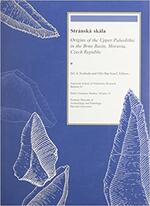
In this volume, an international and interdisciplinary team of scholars—Czech and American archaeologists, paleoanthropologists, geologists, and biologists—report on the results of the investigations from 1980 through the 1990s at Stránská skála, a complex of open-air loess sites on the outskirts of the Brno Basin in the Czech Republic.
The volume presents in-depth studies of the geology, paleopedology, frost processes, vegetation, fauna, and archaeological features of Stránská skála that break new ground in our understanding of early modern humans in central Europe.
Jirí Svoboda is Professor at the University of Brno and Director of the Institute of Archaeology, Dolni Vestonice, Academy of Science of the Czech Republic.
Ofer Bar-Yosef is MacCurdy Professor of Prehistoric Archaeology, Harvard University.
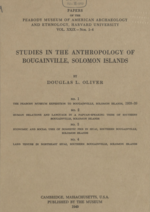
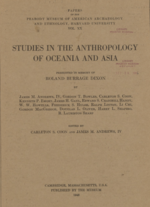

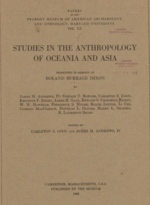
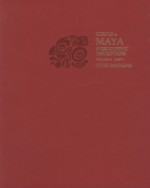
For more than 45 years, the Peabody Museum has been publishing The Corpus of Maya Hieroglyphic Inscriptions. The goal of this unique series of folio volumes is to document in photographs and detailed line drawings all known Maya inscriptions and their associated figurative art to advance the study of the ancient Maya. When complete, the Corpus will have published the inscriptions from over 200 sites and 2,000 monuments. The series has been instrumental in the remarkable success of the ongoing process of deciphering Maya writing, making available hundreds of texts to epigraphers working around the world, and to source communities in in Honduras, Guatemala, and Mexico.
Each volume in the series consists of three or more fascicles, which examine an individual site or group of neighboring sites and include maps of site location and plans indicating the placement monuments within each site. Each inscription is reproduced in its entirety in both photographs and line drawings with descriptive texts.
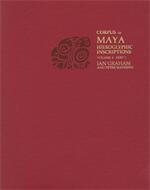
For more than 45 years, the Peabody Museum has been publishing The Corpus of Maya Hieroglyphic Inscriptions. The goal of this unique series of folio volumes is to document in photographs and detailed line drawings all known Maya inscriptions and their associated figurative art to advance the study of the ancient Maya. When complete, the Corpus will have published the inscriptions from over 200 sites and 2,000 monuments. The series has been instrumental in the remarkable success of the ongoing process of deciphering Maya writing, making available hundreds of texts to epigraphers working around the world, and to source communities in in Honduras, Guatemala, and Mexico.
Each volume in the series consists of three or more fascicles, which examine an individual site or group of neighboring sites and include maps of site location and plans indicating the placement monuments within each site. Each inscription is reproduced in its entirety in both photographs and line drawings with descriptive texts.
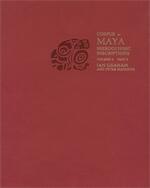
For more than 45 years, the Peabody Museum has been publishing The Corpus of Maya Hieroglyphic Inscriptions. The goal of this unique series of folio volumes is to document in photographs and detailed line drawings all known Maya inscriptions and their associated figurative art to advance the study of the ancient Maya. When complete, the Corpus will have published the inscriptions from over 200 sites and 2,000 monuments. The series has been instrumental in the remarkable success of the ongoing process of deciphering Maya writing, making available hundreds of texts to epigraphers working around the world, and to source communities in in Honduras, Guatemala, and Mexico.
Each volume in the series consists of three or more fascicles, which examine an individual site or group of neighboring sites and include maps of site location and plans indicating the placement monuments within each site. Each inscription is reproduced in its entirety in both photographs and line drawings with descriptive texts.
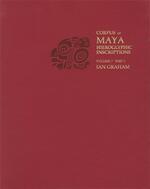
For more than 45 years, the Peabody Museum has been publishing The Corpus of Maya Hieroglyphic Inscriptions. The goal of this unique series of folio volumes is to document in photographs and detailed line drawings all known Maya inscriptions and their associated figurative art to advance the study of the ancient Maya. When complete, the Corpus will have published the inscriptions from over 200 sites and 2,000 monuments. The series has been instrumental in the remarkable success of the ongoing process of deciphering Maya writing, making available hundreds of texts to epigraphers working around the world, and to source communities in in Honduras, Guatemala, and Mexico.
Each volume in the series consists of three or more fascicles, which examine an individual site or group of neighboring sites and include maps of site location and plans indicating the placement monuments within each site. Each inscription is reproduced in its entirety in both photographs and line drawings with descriptive texts.
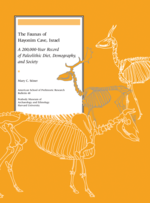
A decade of zooarchaeological fieldwork (1992-2001) went into Mary Stiner’s pathbreaking analysis of changes in human ecology from the early Mousterian period through the end of Paleolithic cultures in the Levant. Stiner employs a comparative approach to understanding early human behavioral and environmental change, based on a detailed study of fourteen bone assemblages from Hayonim Cave and Meged Rockshelter in Israel’s Galilee. Principally anthropological in outlook, Stiner’s analysis also integrates chemistry, foraging and population ecology, vertebrate paleontology, and biogeography. Her research focuses first on the formation history, or taphonomy, of bone accumulations, and second on questions about the economic behaviors of early humans, including the early development of human adaptations for hunting large prey and the relative "footprint" of humans in Pleistocene ecosystems of the Levant.
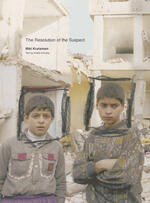
First Place, 2017 New England Book Show (General Trade, Illustrated)
First Place, 2017 NEMA Awards (Books)
Miki Kratsman has worked as a photojournalist in the Palestinian Occupied Territories for over three decades. Originally created in the context of daily news, his tens of thousands of photographs have, in retrospect, taken on fascinating new meanings, as bystanders become protagonists and peripheral details move to the center. Isolated from the original frame, cropped, enlarged, and redisplayed, the reimagined images ask us to explore the limits of the observer’s gaze under conditions of occupation.
Kratsman’s photographs look at both “wanted men”—individuals sought by the Israeli state—and the everyman and everywoman on the street who, by virtue of being Palestinian in a particular time and place, can be seen as a “suspect.” The work is both transgressive and banal, crossing boundaries between Israel and Palestine, “wanted” and “innocent,” street photography and surveillance imagery. Kratsman has also provoked vital, long-term interaction around the images on social media, creating a Facebook page on which viewers are invited to identify the individuals portrayed and comment on their “fate.” His complex project is chronicled in this book in more than 300 images that powerfully implicate the viewer as we follow the gaze of both occupier and occupied within a complex web of power relations around issues of life and death.
A thought-provoking text by Ariella Azoulay engages intimately with Kratsman’s images. Looking at various models of historical and civil construction of the gaze, Azoulay explores the ways in which the shadow of death is an actual threat that hovers over Kratsman’s photographed persons and frames both individuals and the borrowed time within which they exist.
A supplemental booklet contains hundreds of portraits and evocative messages from Kratsman’s Facebook proj
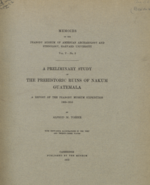
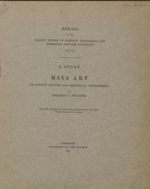
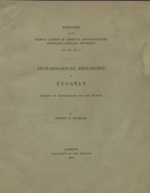
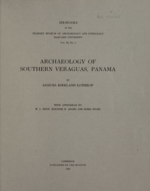
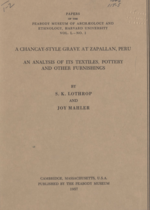
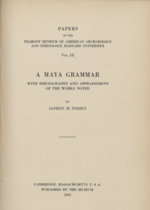
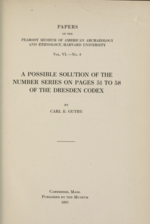
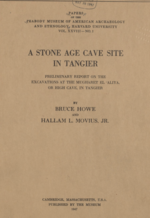
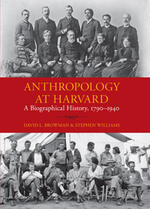
"A monumental achievement"—American Journal of Physical Anthropology
Anthropology at Harvard recounts the rich and complex history of anthropology at America’s oldest university, beginning with the earliest precursors of the discipline within the study of natural history. The story unfolds through fascinating vignettes about the many individuals—famous and obscure alike—who helped shape the discipline at Harvard College and the Peabody Museum. Lively anecdotes provide in-depth portraits of dozens of key individuals, including Louis and Alexander Agassiz, Frederic Ward Putnam, Mary Hemenway, Alice Cunningham Fletcher, Sylvanus Morley, A. V. Kidder, and Antonio Apache. The text also throws new light on longstanding puzzles and debates, such as Franz Boas’s censure by the American Anthropological Association and the involvement of Harvard archaeologists in espionage work for the U.S. government during World War I.
The authors take a “cohort” perspective, looking beyond the big names to the larger network of colleagues that formed the dynamic backdrop to the development of ideas. The significant contributions of amateurs and private funders to the early growth of the field are highlighted, as is the active participation of women and of students and scholars of diverse ethnic backgrounds. A monumental achievement, Anthropology at Harvard makes an important contribution to the history of Americanist anthropology.
"Overall, Anthropology at Harvard provides a comprehensive view of the East Coast development of the discipline and handles a prodigious amount of data remarkably well."—Donald McVicker, Isis >> read the full review
"Anthropology at Harvard will serve as an important, though limited, work of reference for historians of archaeology and anthropology."—Vincent Crapanzano, "Natives," The Times Literary Supplement >> read the full review
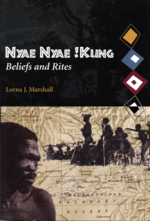
With style and depth, Lorna Marshall leads the reader through the intricacies, ambiguities, and silences of !Kung beliefs. Her narrative, based on fieldwork among the Bushmen of the Kalahari in the early 1950s, brings into focus a way of life that appears to have existed for millennia. She presents the culture, beliefs, and spirituality of one of the last true hunting-and-gathering peoples by focusing on members of different bands as they reveal their own views. This account, with photography by John Marshall, presents a system of beliefs, one in which personified deities and unpersonifled supernatural forces (n!ow and n/um) interact with man and the natural world. The !Kung believe that this interaction accounts for much of the mystery of life and the vicissitudes of the good and evil that befall mankind. The book also depicts an egalitarian lifestyle based on sharing and group awareness, a lifestyle that has not survived intact the increasing integration of the Bushmen into the modern world.
A companion volume to her 1976 work, The !Kung of Nyae Nyae, this book was published to mark the one-hundredth birthday of Lorna Marshall (1898 – 2002).
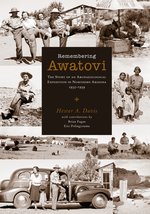
Winner, 2008 New England Book Show (General Trade, Cover)
Gold Medal, 2009 IPPY Awards (West Mountain - Best Regional Non-Fiction)
Remembering Awatovi is the engaging story of a major archaeological expedition on the Hopi Reservation in northern Arizona. Centered on the large Pueblo village of Awatovi, with its Spanish mission church and beautiful kiva murals, the excavations are renowned not only for the data they uncovered but also for the interdisciplinary nature of the investigations. In archaeological lore they are also remembered for the diverse, fun-loving, and distinguished cast of characters who participated in or visited the dig.
Hester Davis’s lively account—part history of archaeology, part social history—is told largely in the words of the participants, among whom were two of Davis’s siblings, artist Penny Davis Worman and archaeologist Mott Davis. Life in the remote field camp abounded with delightful storytelling, delicious food, and good-natured high-jinks. Baths were taken in a stock tank, beloved camp automobiles were given personal names, and a double bed had to be trucked across the desert and up a mesa to celebrate a memorable wedding.
Remembering Awatovi is illustrated with over 160 portraits and photographs of camp life. Essays by Eric Polingyouma and Brian Fagan enrich the presentation.
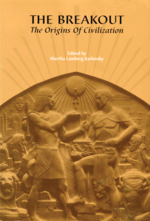
For much of the twentieth century, Mesopotamia was thought to he the singular "Cradle of Civilization;" and the agents of change that brought it about were thought to be demographic, ecological, and technological. Bronze Age Mesopotamian accomplishments were believed to have diffused outward, influencing the development of civilization in the rest of the world. Part of this Mesopocentric view was revised as archaeological evidence revealed that other unique civilizations had existed in both the Old and New Worlds, but the traditional Near Eastern pattern of development continued to serve as a model.
In the mid-1980s, however, Harvard’s Kwang-chih Chang proposed in Symbols--a publication of Harvard’s Peabody Museum and Department of Anthropology--that China’s first civilization did not evolve according to the conventional Mesopotamian model and argued instead for a new paradigm for understanding the origins of civilization in ancient China and the New World.
In this collection of subsequent Symbols articles and other essays, Maya and Near Eastern studies specialists engage in a stimulating debate of Chang’s thesis, also presented here.
The Peabody Museum also publishes Anthropological Literature, a research database that indexes over 660 journals in multiple languages -- a highly recommended research tool.